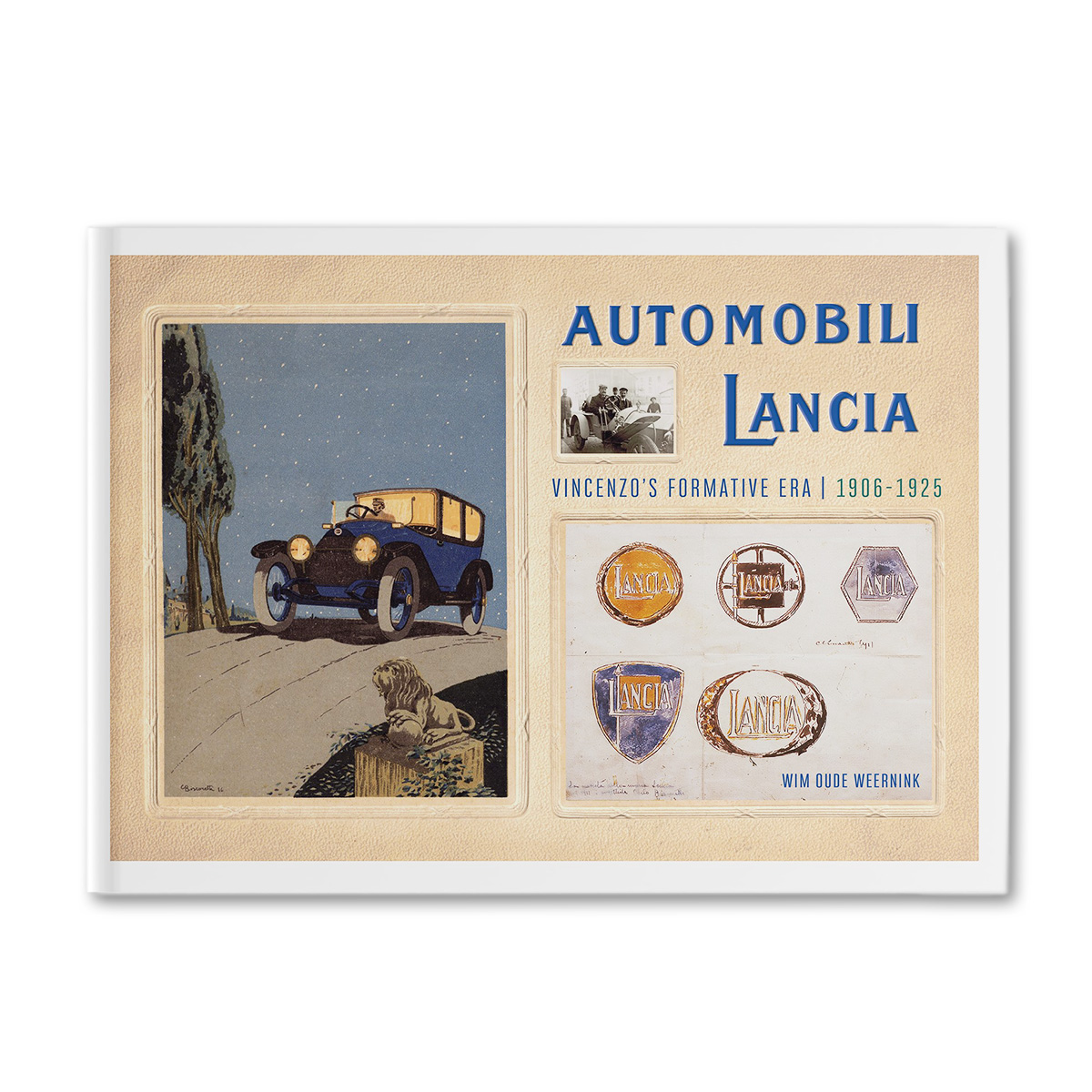Description
AUTOMOBILI LANCIA
Vincenzo’s Formative Era 1906-1925
By Wim Oude Weernink
Much has been written on the pioneering days of motoring, in detailed French, German, English and Italian books or specialised magazines, on the development of engines, bodywork and commercial achievements. But this all dates from pre-world war I days, if not before 1905. The emerging industry of the first decade of the 20th century had a broader spread, with an incredibly industrial expansion and continuous development of technology in all respects. Few authors today take the time and effort to dig into old archives to find information, pictures, drawings etc. of motorcars of the period after say 1905. Even fewer focus on one single make like the individualistic and eventually revolutionary Lancia. You can find dozens of books on Mercedes, Ford or Renault with a focus on cars built after 1920.
As an owner myself of a 1913 20-20HP Lancia Eta I must confess that Wim Oude Weernink is to be praised for taking the initiative and effort to produce a comprehensive book on the very early history of cars from one of the principal pioneers in automotive history. He has discovered many a technical detail hitherto unknown to even the most fanatic Lancia aficionado, and has unearthed – and published documents and advertisements so far unknown to our eyes. Whereas the Lancia Lambda revealed in 1922 was a revolutionary car with a monocoque, V-4 engine and independent front suspension incorporating a shock absorber, we all know such revolution does not arise at once. But even the 1907-1922 years at Lancia marked a period of constant out of the box thinking and refining existing techniques. Some were adopted from the USA, like the Jones Speedometer and the electric Rushmore starter developed by Delco for Cadillac and finding its European premiere in the 1913 35 HP Lancia Theta. That was the successor of the 20-30HP Eta which already had electric lighting in 1912.
While enjoying growing success of his evolutionary developed model range Lancia had visionary mindset about the compactness of V-engines from an early stage. A constant trial and errors starting in 1915 with a 90-degree block for aircraft engines resulting in a experimental V12 car and the Trikappa V8 model ending the first era of his brand, succeeded by the V4-Lambda engine with a single overhead camshaft and a 13 degree included angle, all developed by Vincenzo Lancia and his engineers.
Content:
Vincenzo & Turin – Alfa, Dialfa & Beta – Gamma & 20-30 HP – American SGV Lancias – Racing early Lancias – Upmarket Theta – Prelude of the narrow-V – Kappa & Dikappa – Transitional Trikappa – Legacy trucks – Maintenance – Exposure & promotion – Appendix: identification/specifications
Format: 284 x 217 mm (oblong) – 136 pages & 345 illustrations
Weight: 850 gr
Language: English
ISBN 9789649682

